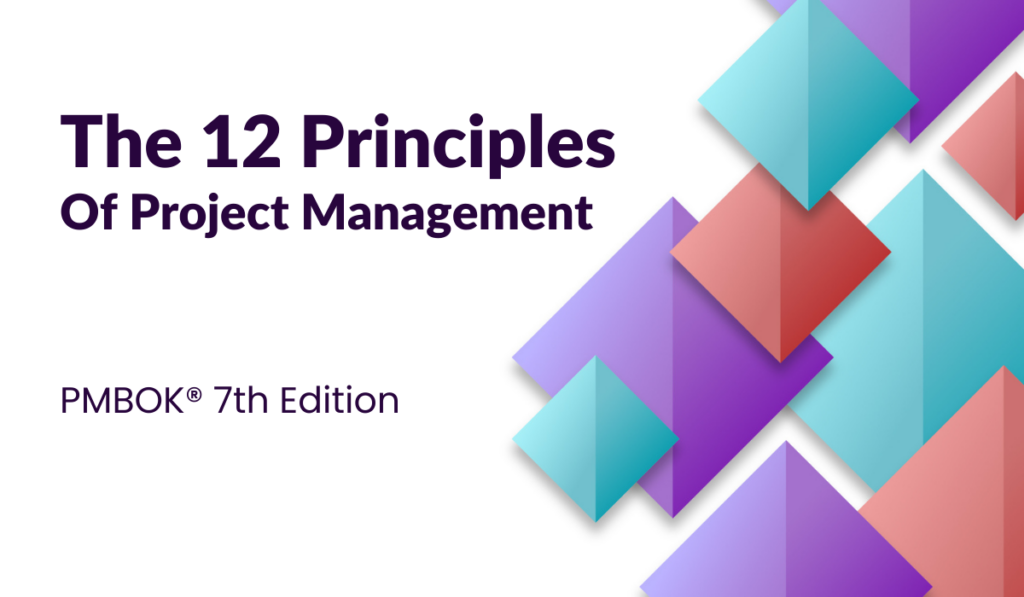Table of Contents
ToggleThe Project Management Body of Knowledge (PMBOK®) Guide is a cornerstone in the world of project management. As industries evolve, so do the frameworks that guide project managers. The PMBOK® Guide Seventh Edition marks a significant shift from its predecessors, introducing a more holistic and principle-based approach to project management. Central to this shift are the 12 principles of project management, which serve as foundational guidelines for project managers to navigate the complexities of modern projects. These principles are not prescriptive rules but rather guiding values that help shape the behavior and decision-making processes of project managers and their teams.
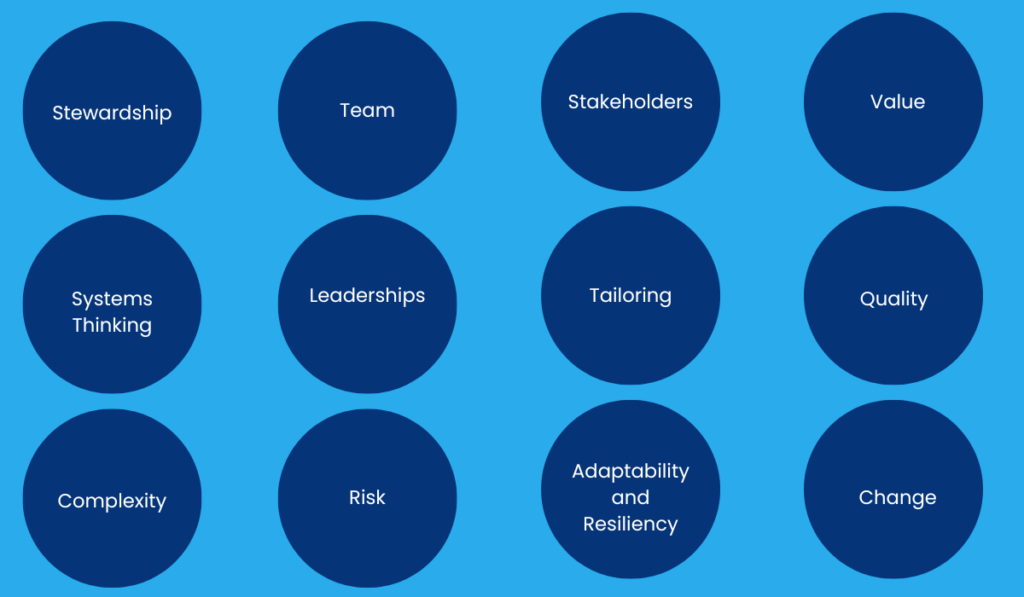
1. Be a Diligent, Respectful, and Caring Steward
The first principle emphasizes the importance of stewardship in project management. A steward in the context of project management is someone who is entrusted with the responsibility of managing resources, teams, and the overall project process with care and diligence. This principle highlights the ethical responsibility project managers have to manage projects in a way that respects the interests of all stakeholders, including the environment, the community, and the organization.
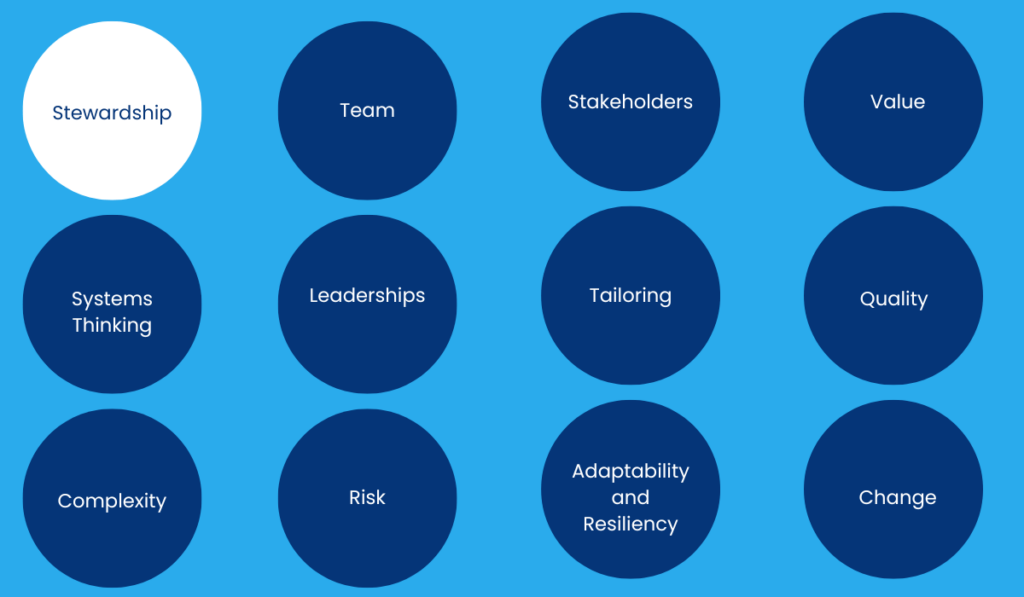
Stewardship is not just about managing resources efficiently; it’s about doing so with respect for the people involved and the broader impacts of the project. This principle encourages project managers to be mindful of the long-term effects of their decisions, ensuring that projects contribute positively to society and the environment.
2. Create a Collaborative Project Team Environment
Collaboration is at the heart of successful project management. This principle focuses on the importance of creating an environment where team members can work together effectively. A collaborative project environment is one where open communication, mutual respect, and trust are prioritized. It’s an environment where team members feel valued and empowered to contribute their ideas and expertise.
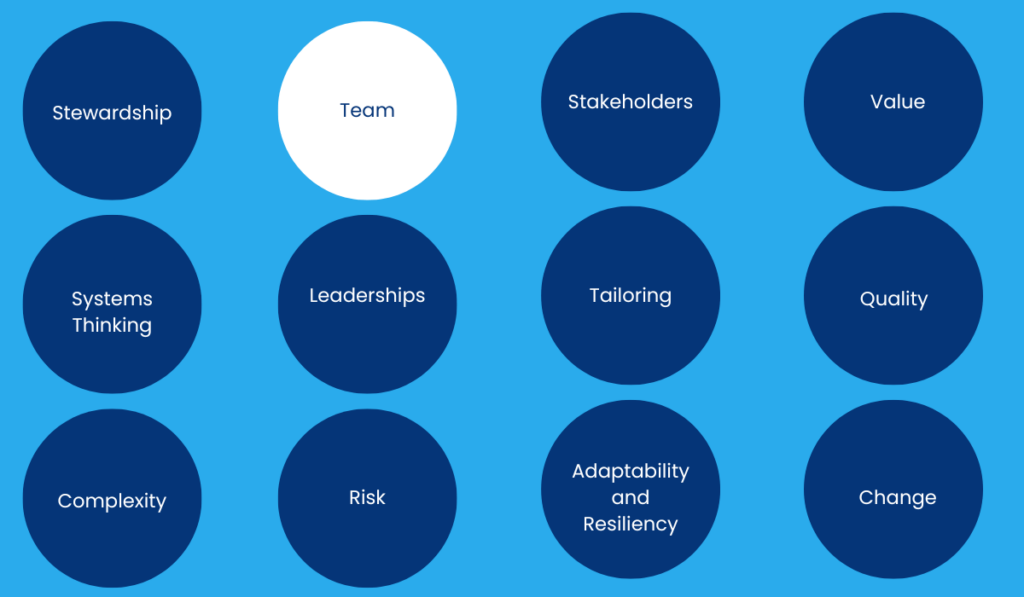
Creating such an environment requires project managers to be proactive in fostering team cohesion, addressing conflicts constructively, and ensuring that everyone’s voice is heard. Collaboration is not just about working together; it’s about creating synergy where the collective effort of the team is greater than the sum of its parts.
3. Effectively Engage with Stakeholders
Stakeholders are any individuals or groups who have an interest in the outcome of a project. This principle emphasizes the importance of engaging with stakeholders throughout the project lifecycle. Effective stakeholder engagement involves understanding their needs and expectations, keeping them informed, and involving them in decision-making processes when appropriate.
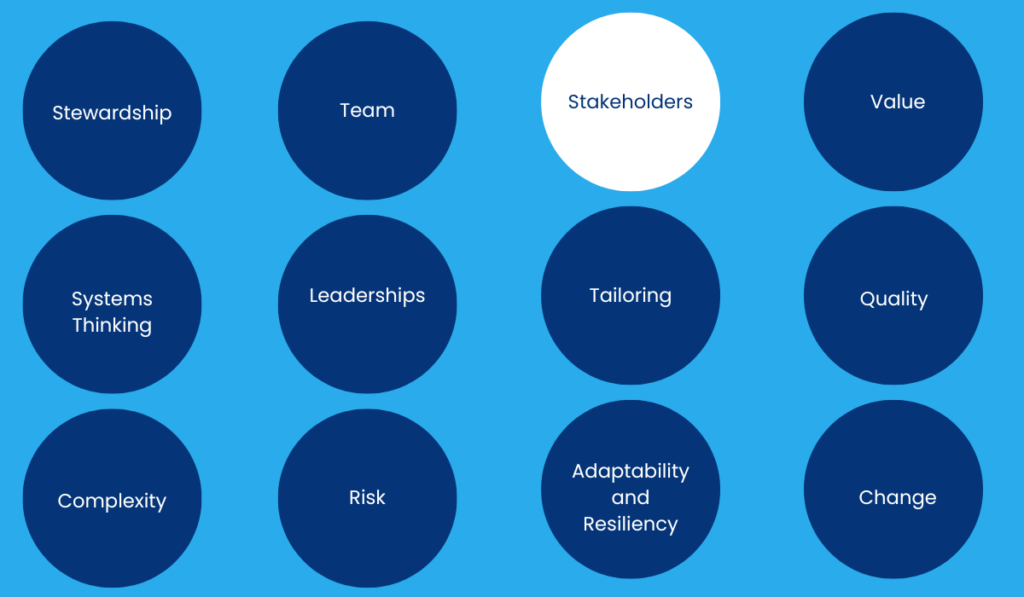
Project managers must recognize that stakeholders can significantly influence the success of a project. By actively engaging with stakeholders, project managers can build strong relationships, manage expectations, and ensure that the project delivers value to those who are most affected by it.
4. Focus on Value
The fourth principle underscores the importance of focusing on value delivery throughout the project. In the context of project management, value refers to the benefits that a project delivers to its stakeholders. This principle encourages project managers to continuously assess whether the project is on track to deliver the expected value and to make adjustments as necessary.
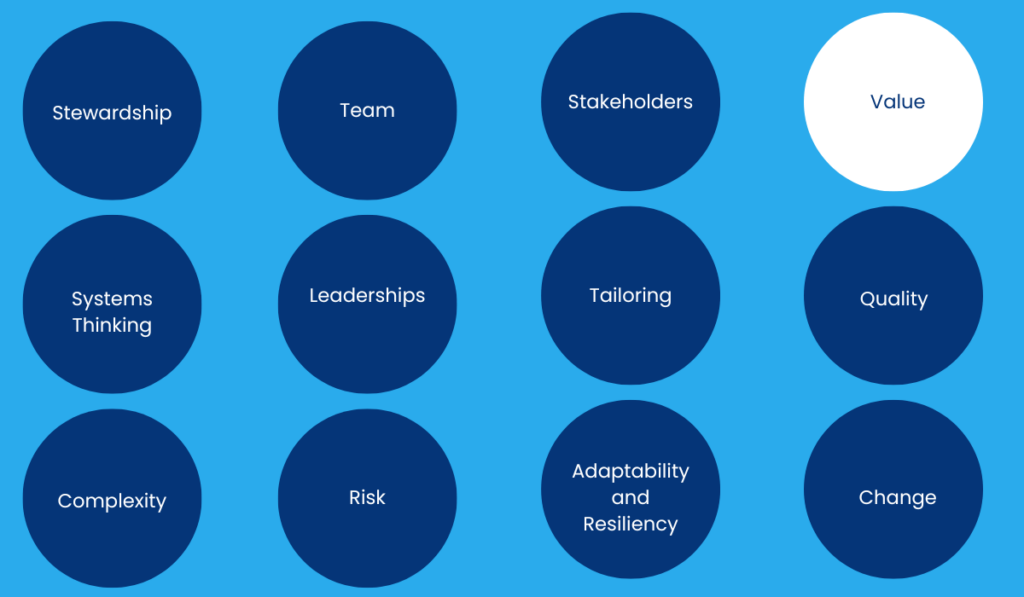
Focusing on value means prioritizing outcomes over outputs. It’s not just about completing tasks and delivering products; it’s about ensuring that the project delivers tangible benefits that align with the strategic objectives of the organization. This principle is particularly important in today’s fast-paced business environment, where the ability to deliver value quickly can be a key competitive advantage.
5. Recognize, Evaluate, and Respond to System Interactions
Projects do not exist in isolation. They are part of a larger system that includes other projects, programs, and organizational processes. This principle highlights the importance of recognizing and evaluating the interactions between the project and its broader environment.
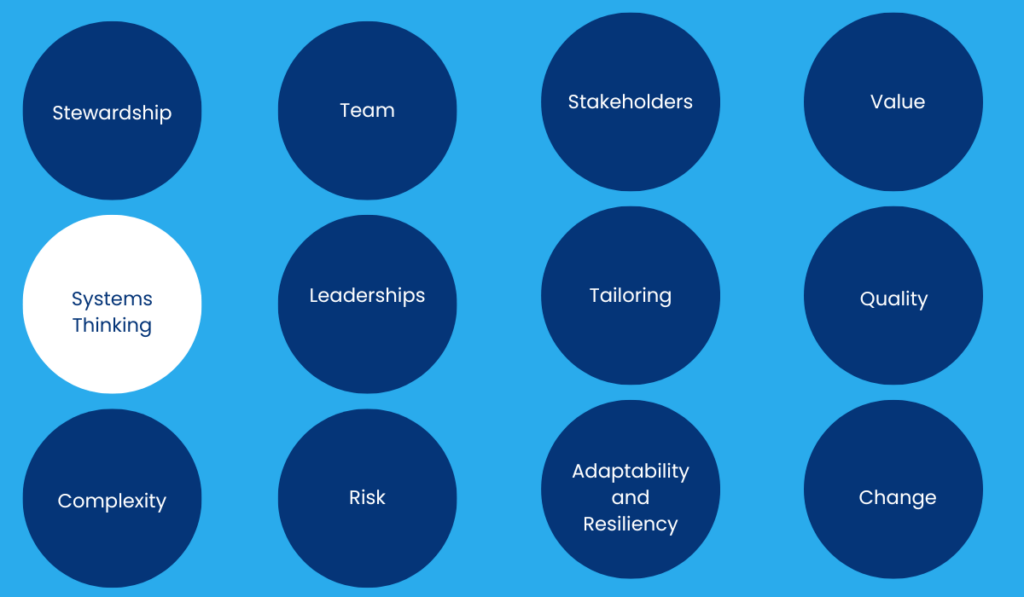
System interactions can include dependencies between projects, the impact of organizational changes on the project, and the influence of external factors such as market conditions and regulatory requirements. Project managers must be vigilant in identifying these interactions and responding to them in a way that minimizes risks and maximizes opportunities.
6. Demonstrate Leadership Behaviors
Leadership is a critical component of effective project management. This principle emphasizes the importance of demonstrating leadership behaviors that inspire and guide the project team. Leadership in project management goes beyond simply managing tasks and resources; it involves setting a vision for the project, motivating the team, and creating an environment where team members can thrive.
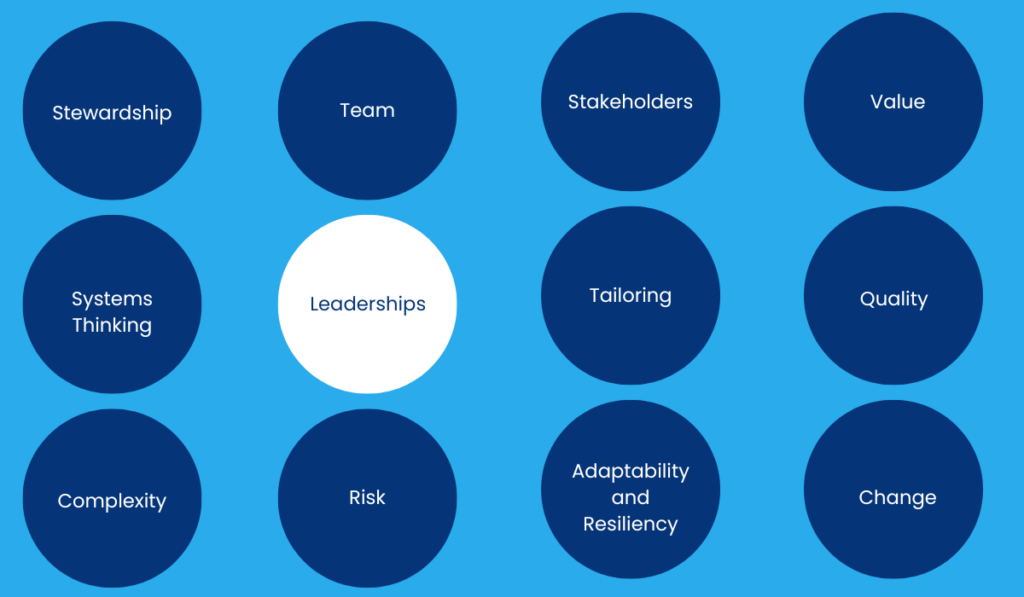
Effective project leaders are those who can adapt their leadership style to the needs of the team and the project. They are able to navigate challenges, make difficult decisions, and inspire confidence in their team members. This principle encourages project managers to continuously develop their leadership skills and to lead by example.
7. Tailor Based on Context
No two projects are the same, and a one-size-fits-all approach to project management is rarely effective. This principle emphasizes the importance of tailoring project management approaches to the specific context of the project. Tailoring involves adapting processes, tools, and techniques to fit the unique characteristics of the project, such as its size, complexity, and stakeholder requirements.
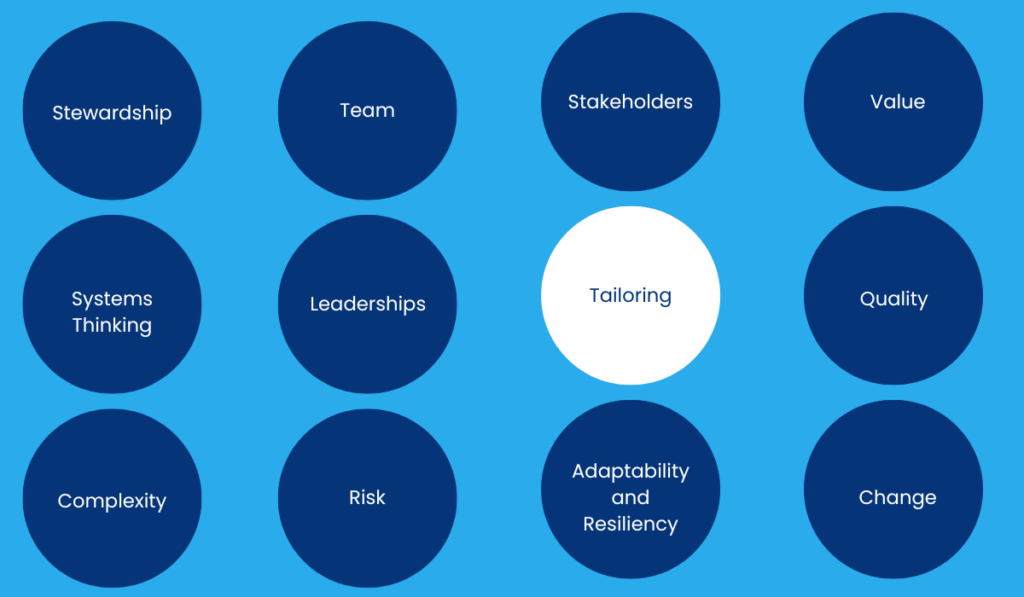
Tailoring is not about disregarding established practices; it’s about applying them in a way that makes sense for the project at hand. This principle encourages project managers to be flexible and to use their judgment to determine the most appropriate approach for each project.
8. Build Quality into Processes and Deliverables
Quality is a key consideration in project management, and this principle emphasizes the importance of building quality into every aspect of the project. Quality in project management refers to the degree to which the project’s deliverables meet the needs and expectations of the stakeholders.
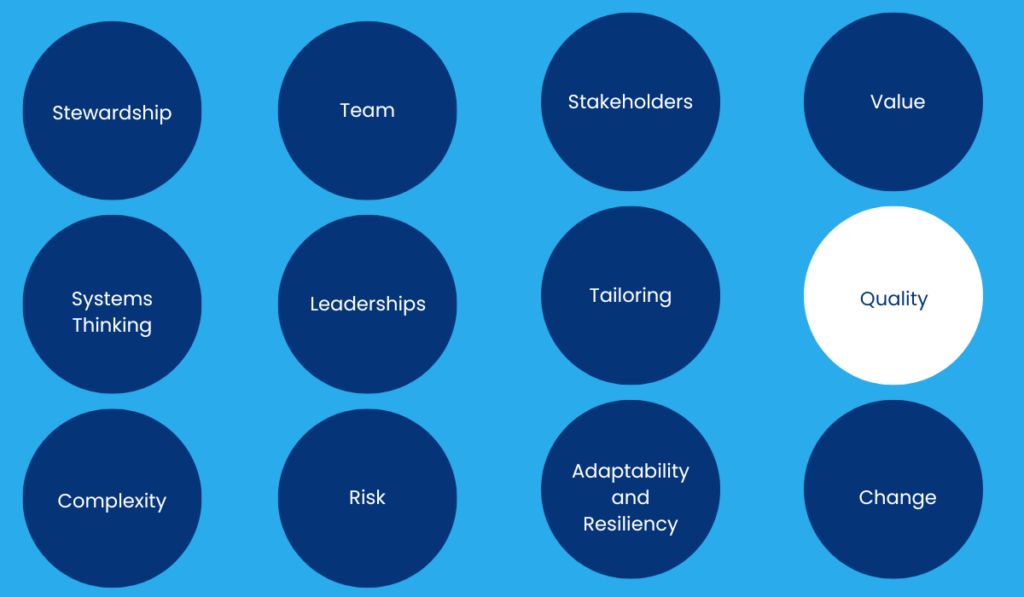
Building quality into processes and deliverables involves more than just testing the final product. It requires a proactive approach to quality management, where quality is considered at every stage of the project, from planning through to execution and delivery. This principle encourages project managers to integrate quality management into their project processes and to make quality a priority throughout the project lifecycle.
9. Navigate Complexity
Complexity is an inherent characteristic of many projects, and this principle emphasizes the importance of navigating complexity effectively. Complexity in project management can arise from a variety of sources, including the project’s scope, the number of stakeholders involved, and the interdependencies between different project elements.
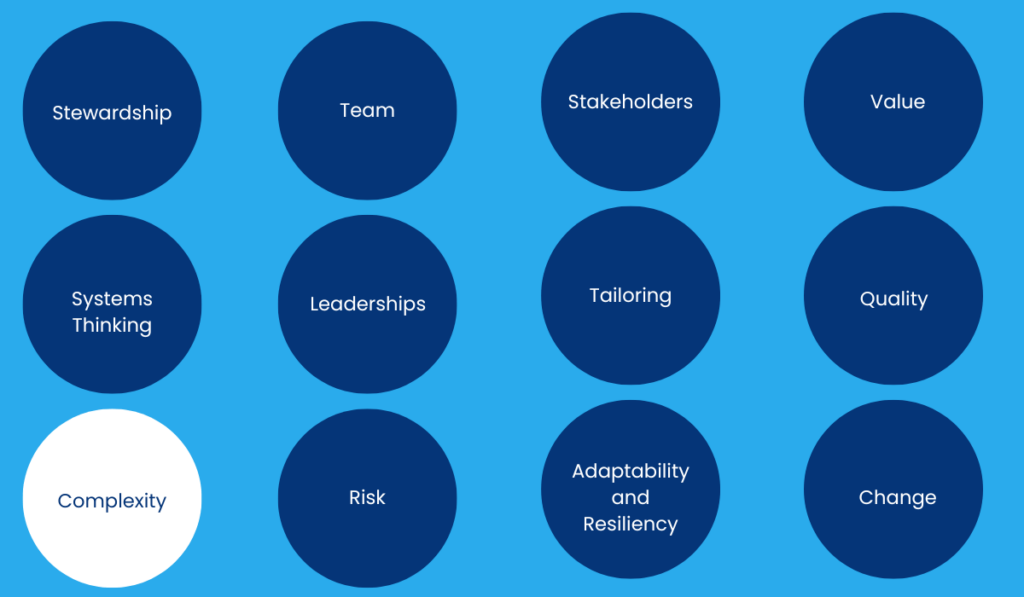
Navigating complexity requires project managers to be adaptable, resourceful, and proactive in managing the challenges that arise. This principle encourages project managers to develop strategies for managing complexity, such as breaking down complex tasks into manageable components, using tools and techniques to visualize and manage interdependencies, and continuously monitoring and adjusting the project plan as needed.
10. Optimize Risk Responses
Risk management is a critical aspect of project management, and this principle emphasizes the importance of optimizing risk responses. Risk in project management refers to any uncertainty that could affect the project’s objectives. Effective risk management involves identifying, assessing, and responding to risks in a way that minimizes their impact on the project.
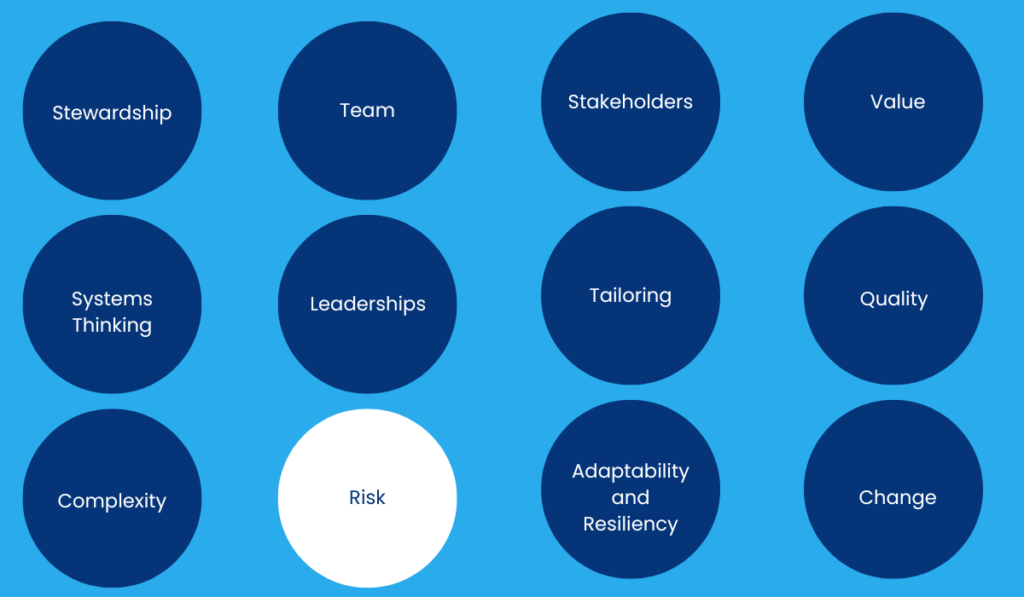
Optimizing risk responses involves not only mitigating negative risks (threats) but also taking advantage of positive risks (opportunities). This principle encourages project managers to develop a proactive approach to risk management, where risks are continuously monitored and managed throughout the project lifecycle.
11. Embrace Adaptability and Resiliency
The ability to adapt to change and recover from setbacks is crucial in today’s dynamic project environment. This principle emphasizes the importance of embracing adaptability and resiliency in project management. Adaptability refers to the ability to adjust to changing circumstances, while resiliency refers to the ability to recover from setbacks and continue moving forward.
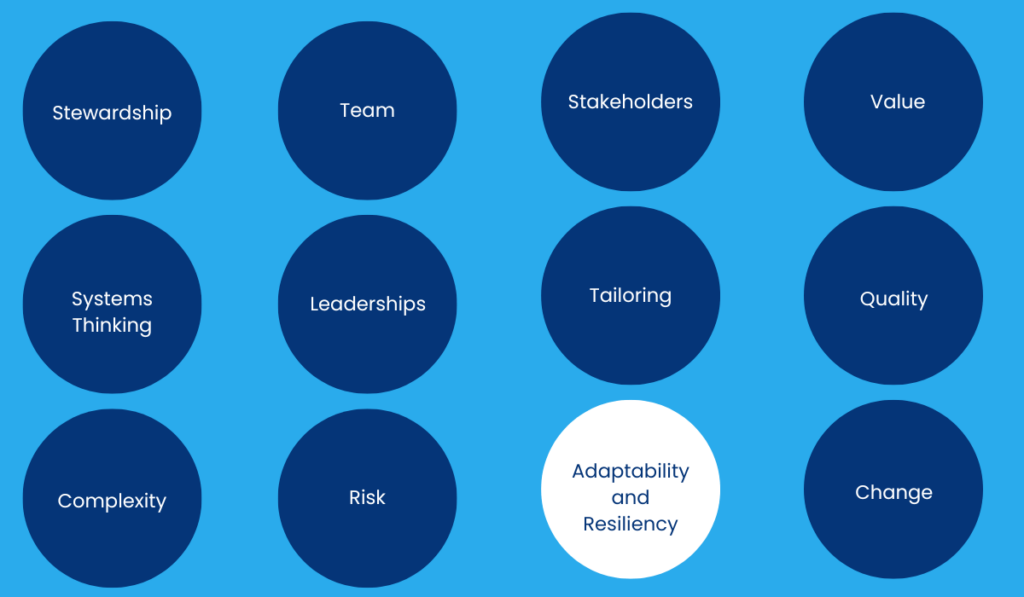
Project managers who embrace adaptability and resiliency are better equipped to handle the uncertainties and challenges that arise during a project. This principle encourages project managers to develop strategies for building adaptability and resiliency into their project processes, such as maintaining a flexible project plan, fostering a culture of continuous learning, and being prepared to pivot when necessary.
12. Enable Change to Achieve the Envisioned Future State
Projects are often vehicles for change, and this principle emphasizes the importance of enabling change to achieve the envisioned future state. This principle recognizes that projects are not just about delivering outputs; they are about driving change that delivers value to the organization and its stakeholders.
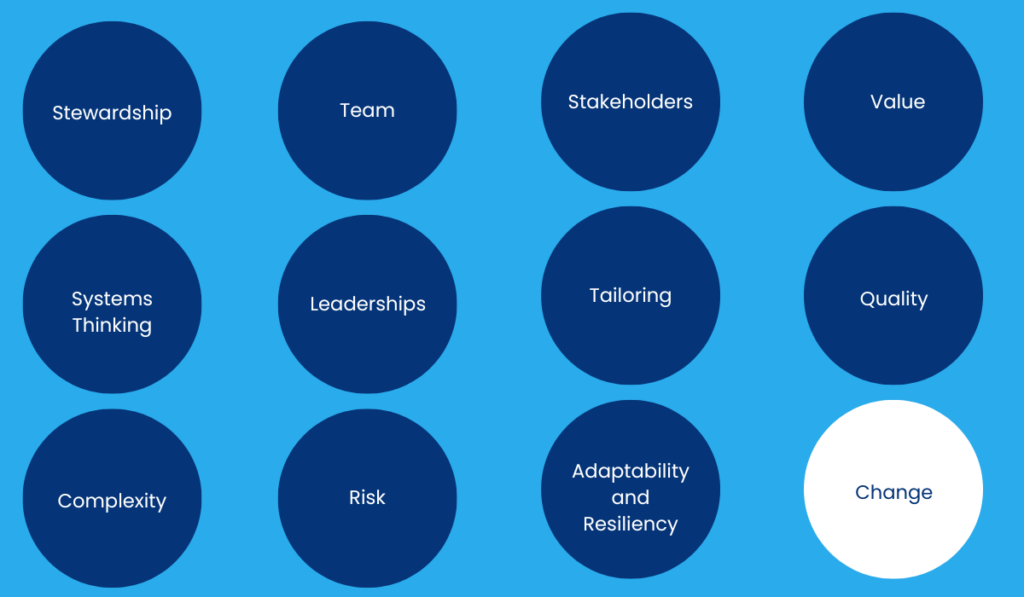
Enabling change involves more than just managing the technical aspects of the project; it involves managing the people side of change as well. This includes understanding the impact of the project on stakeholders, addressing resistance to change, and ensuring that the change is sustainable over the long term. This principle encourages project managers to take a holistic approach to change management, where the focus is on achieving the desired outcomes and ensuring that the change delivers the intended benefits.
Conclusion
The 12 principles of project management outlined in the PMBOK® Guide Seventh Edition provide a comprehensive framework for navigating the complexities of modern projects. These principles are not prescriptive rules but rather guiding values that help project managers make informed decisions, manage risks, and deliver value to stakeholders. By understanding and applying these principles, project managers can enhance their ability to manage projects effectively and contribute to the success of their organizations.
As the field of project management continues to evolve, these principles will remain a valuable resource for project managers seeking to navigate the challenges of today’s dynamic project environment. Whether you are managing a small, straightforward project or a large, complex program, the 12 principles of project management provide a solid foundation for achieving success.
